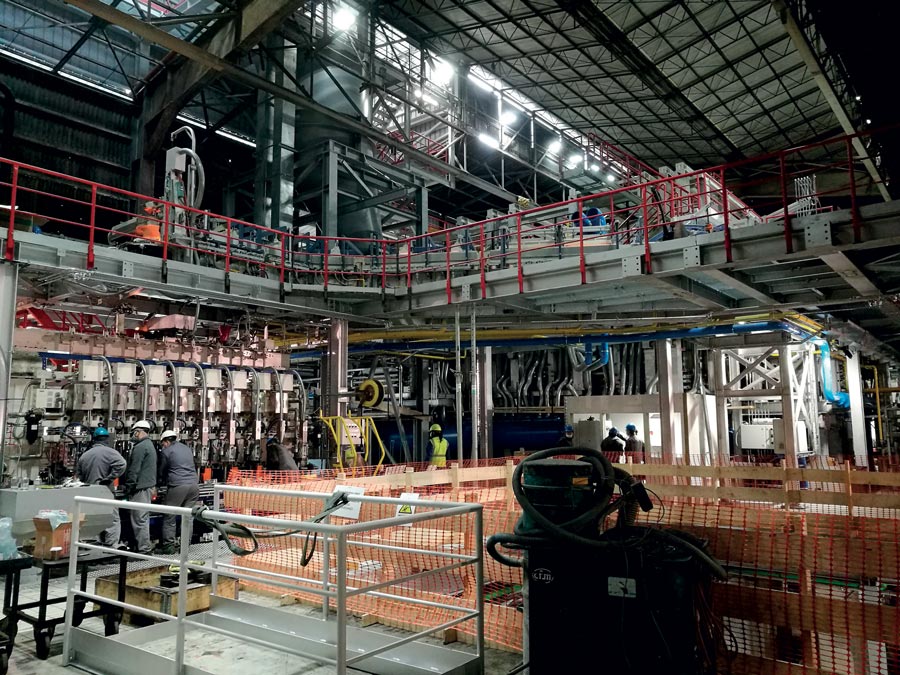This article gives us some examples of how SORG has been dealing with the COVID pandemic, and how its work and projects are continuing to be carried out despite restrictions and quarantine periods.
 |  |
During 2019, and despite the coronavirus pandemic, SORG continued to provide emergency support to its customers around the world.
CHINA
This includes two major projects in China where despite many adversities and restrictions, the innovative furnace specialist was able to carry out essential work for Qixia Changyu Glass and Huifeng Glass.
Engineers from SORG had to go through 14 days of quarantine under strict conditions and with various tests, before they were even allowed on-site. At Qixia, they started the assembly and tempering work on Furnace 6 in October.
Thanks to the high quality of the assembly, they were able to offer top-level remote support service, right up until the successful glass flow at the end of the month.
Following its completion, the team from SORG then travelled immediately to the construction site in Huifeng, to take care of the tempering there in November.
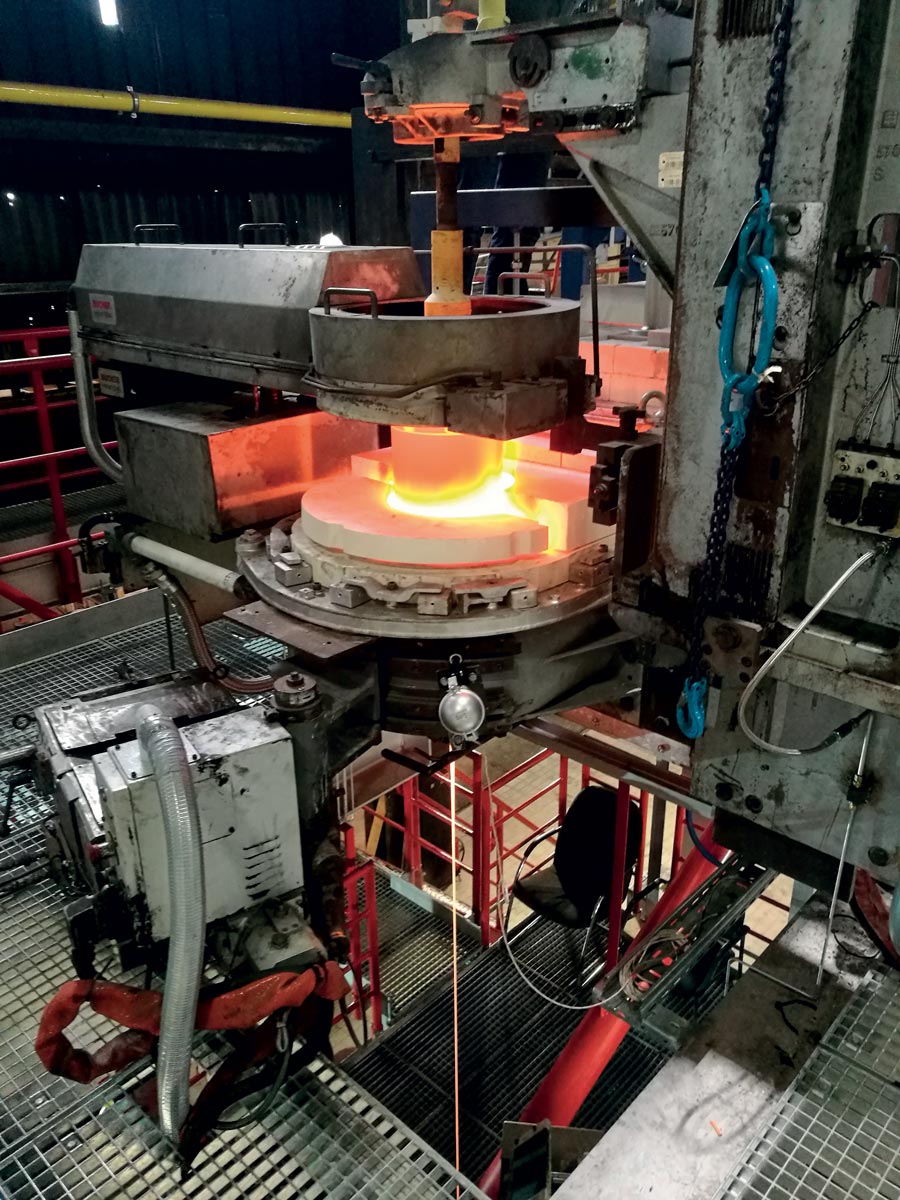
SLOVENIA
Based in Slovenia, Steklarna Hrastnik is a premium and super premium glassmaker for spirits and perfumery packaging.
Wishing to increase the melting capacity of Furnace G to 120 tons per day of high-quality soda lime flint glass, the manufacturer called upon Germany’s SORG Group for its world-renowned support in glass melting and conditioning technologies.
Existing space at the plant is very limited, so to meet the requirements for glass quality and production capacity, SORG’s new calculated design strategically enlarged the melting surface from 39.5m² to 57m².
In addition, the melting burners have also been increased from two to three on each side, while an air-cooled barrier wall has been included to separate the melting area from the refining area. By installing this wall, the refining process will be greatly improved as the glass is forced to flow upwards, towards the glass bath surface.
Although Slovenia was classified as high-risk and had a strict lock-down, three dedicated specialists from SORG were prepared to travel there to master the challenges of reconstructing and commissioning the furnace on-site.
The project was successfully completed on schedule to the total satisfaction of Steklarna Hrastnik, and the first glass was produced recently.
SOUTH AFRICA
Due to the different coronavirus restrictions in South Africa, SORG Group had no choice but to offer commissioning and tempering at Consol Glass (Pty.) Ltd via remote support.
With a world-class reputation for innovative glass melting and conditioning technologies, SORG supplied a 175 tpd 340S+® tandem forehearth to Africa’s largest glass container manufacturer, as well as a SCADA system for its Furnace C1 and two forehearths. Keeping up to date with the individual rules of respective countries has been a real challenge, especially when they can often change on a daily basis.
Having supervised the installation of equipment and initial heating up of the furnace on-site, SORG’s specialists had to come and go on a daily basis when lockdown started, before the furnace was eventually cooled down due to a total alcohol ban and all work related to it. As soon as lockdown was lifted there was a high demand for glass bottles, however with international travel still not allowed the specialist team was able to offer very good remote assistance. Combined with the excellent work of Consol Glass personnel, it was possible to successfully and safely put the forehearth and SCADA system into full operation.
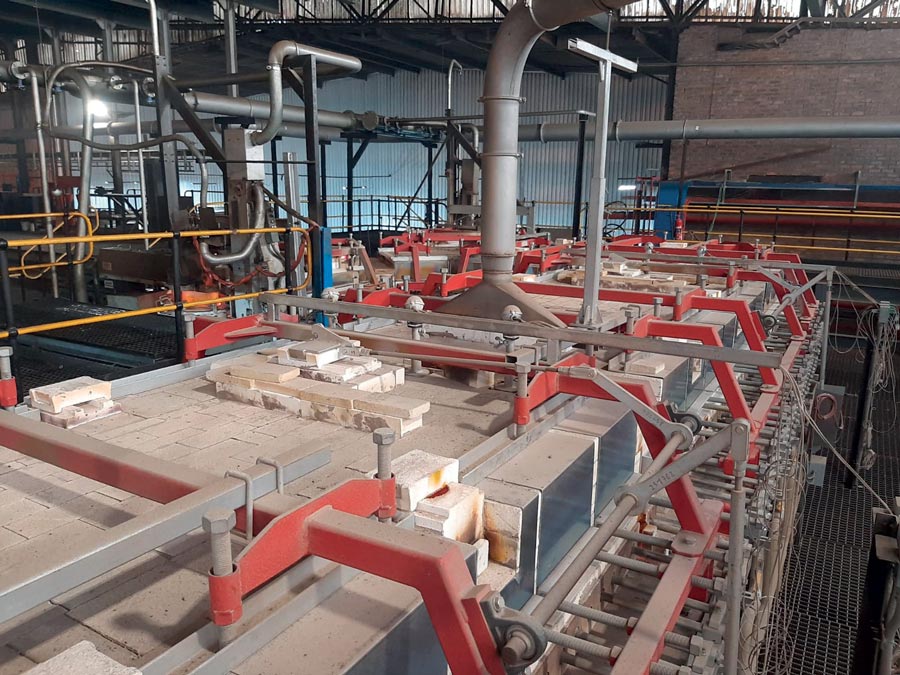
SPEAKING TO SORG
GLASS MACHINERY PLANTS & ACCESSORIES (GMP&A): The two most recent projects undertaken by SORG were in Slovenia and in China – both countries with a high level of risk for your technicians. How did you organize this work?
SORG: Despite the critical circumstances, all our specialists were willing to do the necessary work in those high-risk areas. After we had their agreements, we started working out a safety plan and instructions for performing occupational health and safety measures especially for this site in Slovenia. This was realised in cooperation with Steklarna Hrastnik.
Luckily, during that time it was not mandatory to go into quarantine when travelling from Germany to Slovenia and our specialists could start working directly the day after their arrival. During the entire installation and commission period everyone at the site considered the hygienic measures, ensuring that everyone stayed healthy and no one got infected.
During the installation, the Slovenian government decided to go into a straight lockdown. Since that time our staff had to live with a lot of restrictions. However, thanks to the support of Steklarna Hrastnik it was even possible to stay in the hotel and our specialists (the only guests) were served well the whole time.
After completion of the works our specialists did a COVID-19 test right after their arrival in Germany. Luckily no one tested positive.
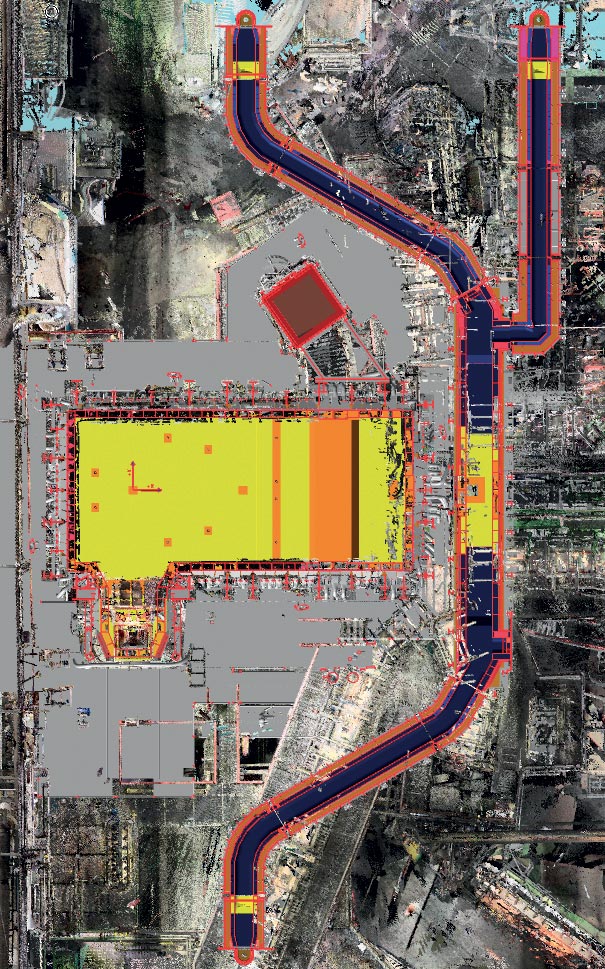
GMP&A: Let’s speak about the increase in melting capacity carried out in Slovenia at Steklarna Hrastnik first of all. What were the difficulties involved in enlarging the melting surface in the limited available space?
SORG: The enlargement of glass melting plants and the reuse of existing structures and infrastructures is very complex and we are confronted with respective challenges. Therefore, a detailed visualization of the existing plant complex is crucial. Due to its big range of vision, reliability and high accuracy, 3D laser scanning has proven itself in the glass industry as a useful, efficient, and time-saving measurement method. Thanks to our expertise in 3D laser scanning, our company had the necessary tools and internal experts at hand to tackle these challenges appropriately, to get the best basis for the design, and of course to offer our customer the best solution.
At the beginning of the project phase, a SORG expert was sent to the customer site, who executed the 3D laser scanning of the melting furnace, the batch charging system, and the batch house. For that, a special scanner was set up at different positions (normally up to 400 locations or more) in the building. It is important to select the correct spacing between the individual installation positions of the scanner so that a complete scan of the inventory is available for further planning. Three-dimensional images are created, which are later combined to form a coherent point cloud. The point cloud for this project includes all levels and areas from the basement to the roof that were required for the planning of the furnace, the forehearth and the equipment.
The new furnace had to have a larger melting surface than the existing one. Therefore, special attention had to be paid to the rear wall of the building, the existing foundations, and pipes. In the scan, the distances between existing objects such as the furnace wall or the rear wall of the building or even floor heights can be measured.
One important point was the new quenching chamber, which had to be built on the existing foundation. Due to the enlargement, the connection to the furnace had to be installed further in the front (in the direction of the glass flow) for technological reasons. Thanks to measurements in the scan, the chamber could be rotated and placed appropriately on the foundation to fit through the existing ceiling breakthrough.
During the planning phase, the 3D data of the refractory material, steel, stages and cooling were assembled and inserted into the scan, which made it possible to check if there were collisions with existing and reusable equipment or the building.
At the end of the planning, a 3D file of the new overall system was created considering the old building and system structures as well as the position of the new quenching chamber.
To increase the melting capacity, it was necessary to adjust several parts and parameters of the old furnace:
– The metal line was increased.
– The machine layout was changed.
– The melting area was increased from 39,5m² to 57m². This enlargement was realised by prolonging the furnace width and the furnace length towards the working end.
– The centre line of the working end was moved towards the cold end.
– Due to the confined space conditions in the forehearth area, also the forehearths were relocated.
– Furthermore, the glass bath depth was increased slightly in order to optimise the residence time of the glass in the melting area, which is one further step for an improved glass quality.
– The steel work had to be adapted and complemented according to these new conditions under reuse of most of the existing steel.
GMP&A: What will the benefits be with three melting burners?
SORG: As the furnace got bigger it was necessary to have a third burner per side to get an improved covering of the melting surface. This enables the client to increase production capacity with higher efficiency.
GMP&A: How was the air-cooled barrier built? Were there any logistic difficulties during construction?
SORG: By installing the air-cooled barrier wall, the refining process is improved as the glass is forced to flow upwards, towards the glass bath surface, i.e. into a high temperature area.
Logistically there were no special difficulties. Of course, a good design – SORG has in-depth experience with this type of air-cooled barrier – and perfect work planning are essential.
GMP&A: Moving on to China, and the two projects carried out there, what did the ‘essential’ work for the two companies – Qixia Changyu Glass and Huifeng Glass – involve?
SORG: For both projects we had a scope with planning, delivery of equipment, supervision, training, and commissioning.
The Huifeng Glass project installation started before the COVID pandemic. So, most of the work has been done at Huifeng in 2019 under the site supervision of SORG specialists before Christmas. Then, the COVID-19 outbreak took place in China during the Chinese New Year in February 2020 and the cosmetic glass market dropped dramatically. Huifeng kept running their ‘old’ furnace until SORG specialists could go to the site in November 2020.
Due to the pandemic, commissioning and training needed to be postponed to a suitable new schedule.
For Qixia Changyu, remote supervision played a very important role. Most of the installation and pre-commissioning was done by the local team from the headquarters of SORG in Germany via remote service with excellent results. We appreciated very much the great support from the Qixia team, including excellent electricians, equipment specialists and translators. SORG installed a permanent remote service via VPN with a key access to all relevant technical experts.
In the meantime, SORG, Qixia Changyu and Huifeng Glass worked very hard to get visas for several SORG specialists to get them on-site. Subsequently, our specialists went through a very hard quarantine period and several tests before they started to work on site.
For the final commissioning on site, the efforts for the two projects were bundled. That means the company SORG send a team of specialists which first trained and commissioned the Qixia project and directly after that they took care of the Huifeng project. So, the 14-day quarantine period for the SORG team in China with very restrictive limitations could be shared between the two projects.
Both projects were expected be finished, with acceptance of the clients by end of 2020.
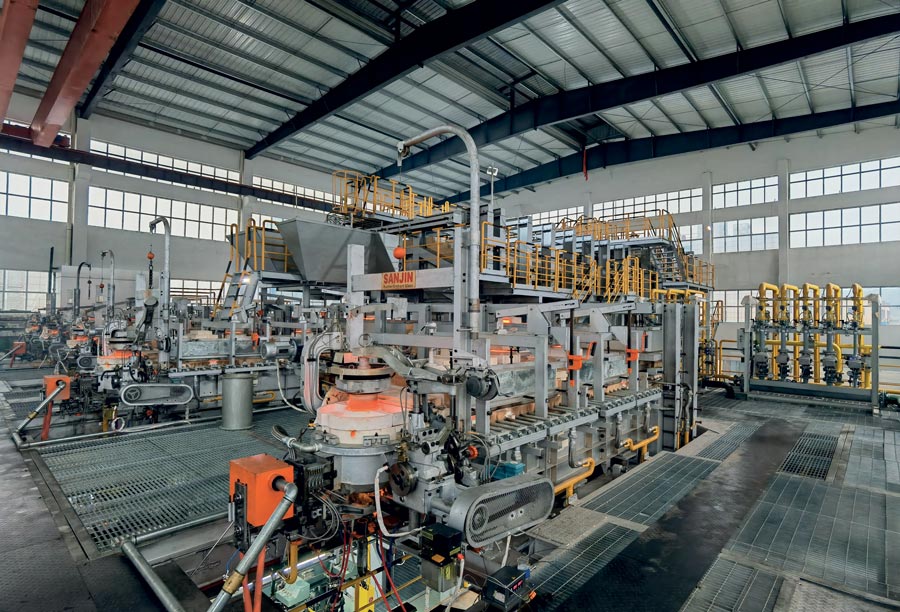
GMP&A: How did the remote assistance proceed and how many technicians were working with the companies?
SORG: As mentioned before, SORG installed a fixed service expert with a daily fixed availability. This expert coordinated the service, involving all relevant technical experts of the SORG team (about 10 different departments) in case of necessity. It was an excellent interaction between the SORG and Qixia teams.
Due to the positive experiences Sorg will establish this remote service for the future.
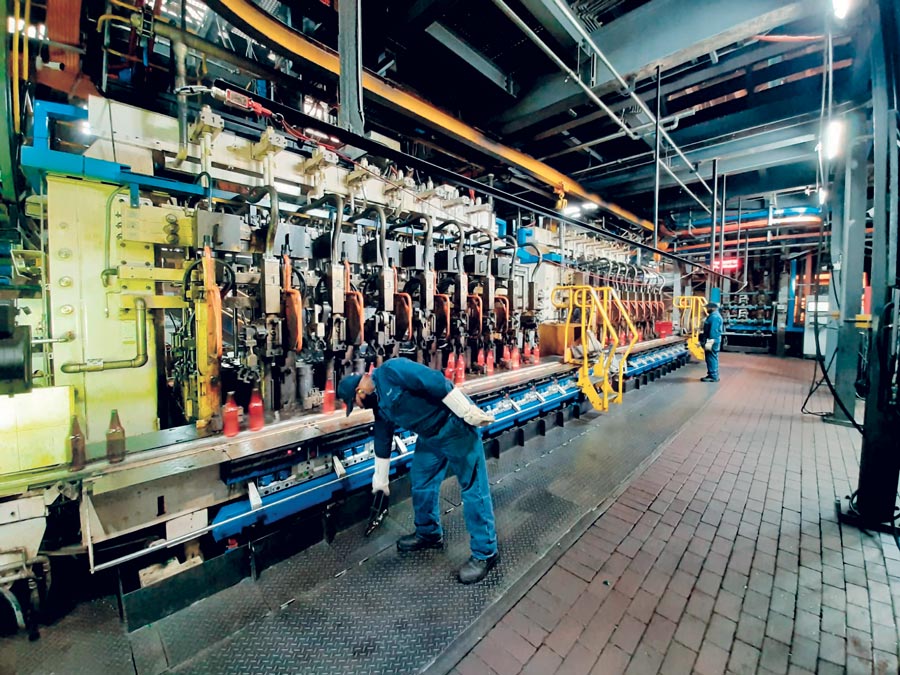
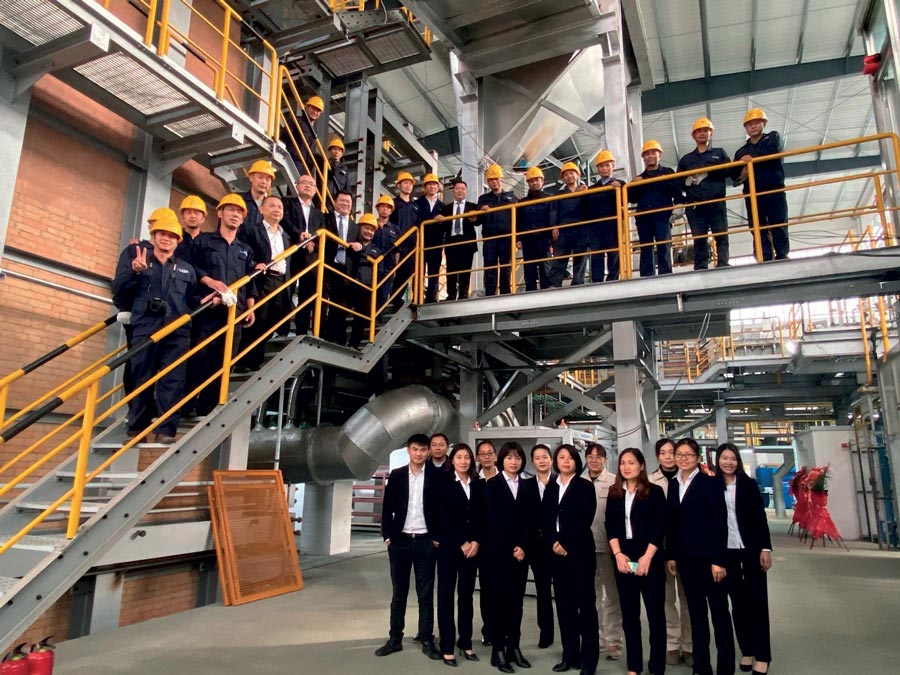
GMP&A: What will be the next projects for SORG, and where?
SORG: We have several rebuilding projects running, for example in Germany with a 200 tpd regenerative end-fired furnace for flint container glass, in Spain with a 360 tpd end-fired furnace for container glass in all colours, and in Egypt where we are rebuilding a S-Melter for flint tableware with 140 tpd. In China, a Green Field project with a regenerative end-fired furnace for flint container glass is planned.
![]()
Sorg (Nikolaus) GmbH & Co. KG
www.sorg.de




